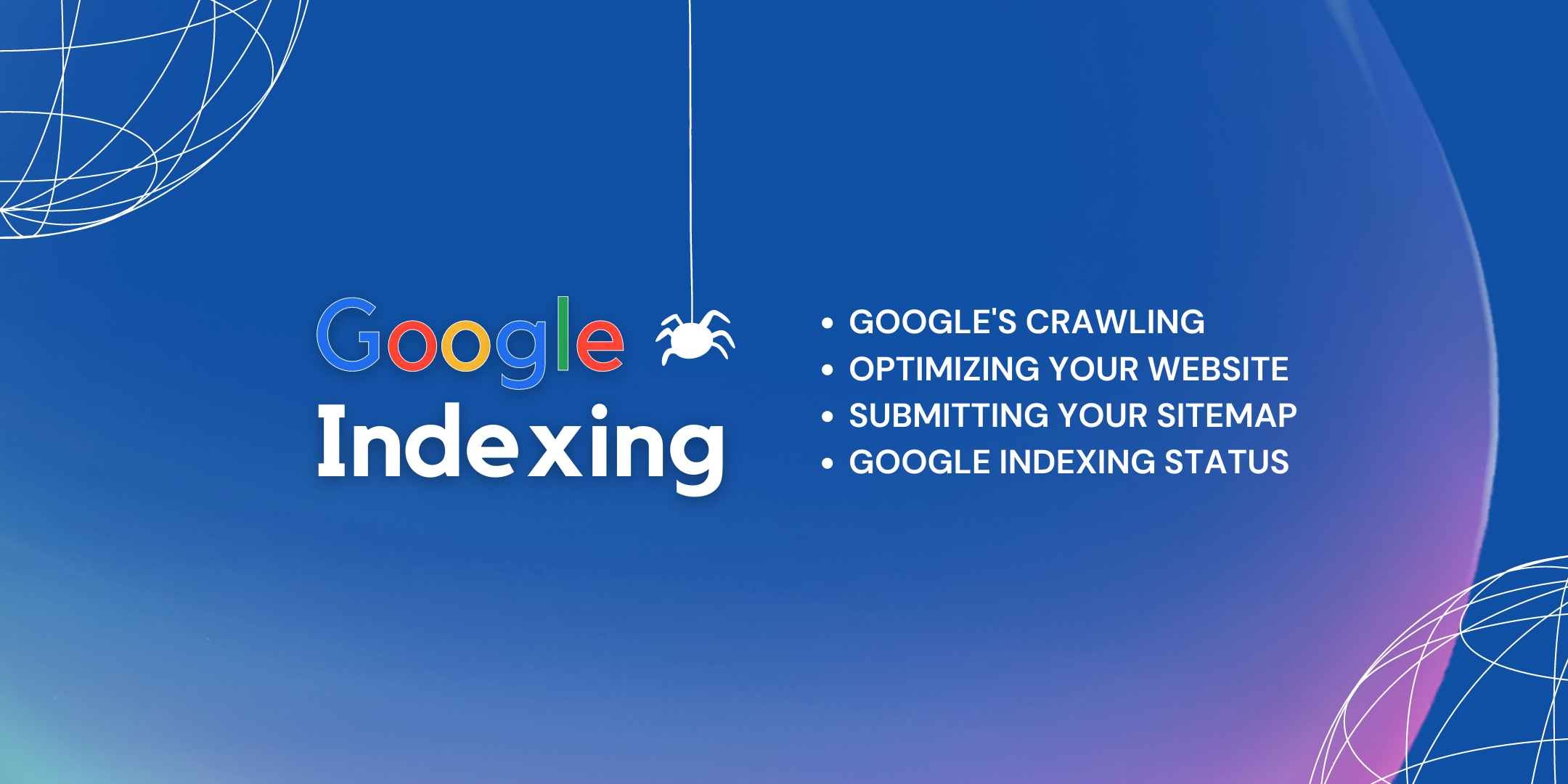
Google is the largest search engine in the world and plays a crucial role in driving traffic to websites. One of the most important steps in getting your website noticed by Google is getting it indexed. Indexing is the process where Google crawls and stores information about your website to make it searchable in its database. Getting your website indexed quickly is important because it means that Google recognizes your site and is actively monitoring it for changes and updates. This can lead to the faster ranking and more visibility in search results.
In this blog, we will discuss how to get Google to index your site quickly. We’ll cover everything from understanding Google’s crawling and indexing process to optimizing your website and monitoring your site’s indexing status. Whether you’re a seasoned pro or just starting out, these tips will help you get your site indexed quickly and effectively.
Google uses a sophisticated algorithm to crawl and index websites. The process begins with Googlebot, the automated program that visits websites and retrieves information. Once it has crawled your site, Google will then index the information it has collected, which makes it available for search results.
Crawling is the process of visiting a website and retrieving information. Googlebot visits your site, scans its content, and follows any links it finds. The information it gathers is then stored in Google’s database.
Indexing is the process of organizing the information gathered during the crawling process. Google uses the information it has gathered to create an index, which is essentially a catalogue of all the content on your site. This index is used to generate search results when a user types in a query.
There are a few things you can do to help Google crawl and index your site quickly and effectively. These include:
By understanding how Google crawls and indexes websites, you can take steps to ensure that your site is crawled and indexed quickly. This will give you a better chance of ranking high in search results and driving more traffic to your site.
Optimizing your website for quick indexing is a crucial step in getting your site noticed by Google. By making certain changes to your site, you can help Google crawl and index your content more effectively.
On-page optimization refers to changes you can make to your website’s content and structure. Some of the most important on-page optimization tips include:
Off-page optimization refers to changes you can make outside of your website. Some of the most important off-page optimization tips include:
In addition to on-page and off-page optimization, there are other factors that can help your site get indexed quickly by Google. These include:
By optimizing your website for quick indexing, you can help Google crawl and index your content more effectively. This will give you a better chance of ranking high in search results and

Submitting your site to Google is an important step in getting your site indexed quickly. By submitting your site, you are telling Google that you want your site to be crawled and indexed.
A sitemap is a file that contains a list of all the pages on your site. Submitting a sitemap to Google makes it easier for Google to crawl and index your site. By including all of your site’s pages in your sitemap, you are helping Google understand the structure of your site and the relationships between your pages.
Submitting a sitemap to Google is easy and can be done in a few simple steps:
By submitting a sitemap to Google, you are making it easier for Google to crawl and index your site. This will help you to rank higher in search results and drive more traffic to your site.
Also, Read – Google and Microsoft Announce their Own AI Chatbots
In addition to submitting a sitemap to Google, you can also submit your site directly to Google. This is done by using the Submit URL tool in Google Search Console. By submitting your site directly to Google, you are telling
Google that you want your site to be crawled and indexed. It’s important to note that submitting your site directly to Google is not a guarantee that your site will be indexed. However, it is a good starting point and can help you get your site indexed more quickly. By submitting your site to Google, you are taking an important step in getting your site indexed quickly. This will help you to rank higher in search results and drive more traffic to your site.
Monitoring your site’s indexing status is an important part of getting your site noticed by Google. By keeping track of how your site is being indexed, you can identify any issues that may be preventing Google from crawling and indexing your content.
Google Search Console is a free tool that helps you monitor your site’s indexing status. It provides information about how many pages from your site have been indexed, any crawl errors, and any security issues. By using Google Search Console, you can monitor your site’s performance and make changes to improve it.
One of the most important reports in Google Search Console is the Indexed Pages report. This report shows you how many pages from your site have been indexed by Google. If you notice that a large number of your pages are not being indexed, it could indicate a problem with your site’s structure or content.
The Crawl Errors report in Google Search Console shows any crawl errors that Google has encountered while crawling your site. Crawl errors can prevent Google from indexing your site and may impact your site’s performance in search results. By fixing crawl errors, you can help Google crawl and index your site more effectively.
The Fetch as Google tool in Google Search Console allows you to see how Google sees your site. This tool is useful for testing your site’s indexing status and ensuring that Google is able to crawl and index your content. By monitoring your site’s indexing status, you can identify any issues that may be preventing Google from crawling and indexing your content. This will help you to make changes to your site that will improve its performance in search results.
Getting your site indexed by Google is an important part of improving your site’s visibility in search results. By following the steps outlined in this article, you can get your site indexed more quickly and effectively.
Start by optimizing your site for search engines by creating high-quality content, using keywords, and improving your site’s structure. Then, monitor your site’s indexing status using tools like Google Search Console to identify any issues that may be preventing Google from crawling and indexing your content.
Finally, submitting your site to Google, either through a sitemap or directly using the Submit URL tool, is a good way to get your site noticed by Google and improve its visibility in search results. It’s important to remember that getting your site indexed is just the first step. To improve your site’s visibility in search results, you need to continue to create high-quality content, monitor your site’s performance, and make changes to improve your site’s performance.
In conclusion, by following these steps, you can get Google to index your site quickly and effectively. Improving your site’s visibility in search results will help you to drive more traffic to your site and improve your online presence.